Paul Murrell tests the 2020 Kia Seltos with pricing, specs, ride and handling, safety, verdict and everything the over-50 driver needs to know.
Summary: Kia’s “small SUV” is a latecomer to a booming category. With a little more size than most, and plenty of standard features, it’s a welcome arrival.
2020 Kia Seltos
Pricing: $25,990 (driveaway, 2-litre S) to $41,990 (driveaway, 1.6-litre GT Line). Safety pack (S and Sport) $1000. Premium paint $520 (driveaway pricing makes it better value than it looks)
Warranty: 7-years, unlimited kilometres, with seven-year roadside assist, seven-year capped priced servicing
Safety: not yet tested (scheduled prior to Christmas 2019) (top-spec models should get five stars, lesser variants only four)
Engine: 2.0-litre DOHC 16-valve petrol four-cylinder, 1.6-litre turbocharged DOHC 16-valve petrol four-cylinder
Power: 110kW @ 6200rpm (2-litre), 130kW @ 6000rpm (1.6-litre)
Torque: 180Nm @ 4500rpm (2-litre), 265kW @ 1500-4500 (1.6-litre)
Transmission: CVT (2-litre S, Sport, 1.6-litre Sport+), 7-speed dual clutch (1.6-litre Sport+, GT Line)
Drive: front wheel drive (2-litre S, Sport, 1.6-litre Sport+), active AWD (1.6-litre Sport+, GT Line)
Body: 4370mm (L), 1800mm (W), 1615 (H, inc roof rails) (a few mm here and a few mm there make all the difference)
Tyre size: 205/60 R16 (steel), 215/55 R17 (alloy), 235/45 R18 (alloy)
Boot capacity: 433 litres (rear seats up), 1393 litres (rear seats down)
Weight: 1429kg
Turning circle: 10.6m
Towing: 1100kg (2-litre, braked), 1250kg (1.6-litre, braked) 600kg (both, unbraked)
Spare: space saver temporary (2-litre S), full size alloy (all other models) (the space saver frees up 65 litres of luggage space)
Fuel tank: 50 litres
Thirst: 6.8L/100km (2-litre, combined, 91 RON), 7.6L/100km (1.6-litre, combined, 91 RON)
seniordriver consumption: not yet tested
[review]
THE CLASSES OF DIFFERENT cars are becoming more and more specific. Not so long ago, we had small SUVs, medium SUVs and large SUVs, but each of those categories is being sliced ever more thinly to permit new entrants.
That means that each sub-category becomes increasingly crowded.
The new Kia Seltos is, as all the promotional material repeatedly reminds us, a “small SUV”, but it’s not quite that simple. It’s line ball on size with, for example, the Nissan Qashqai and Hyundai’s Kona, but larger than the Mazda CX-3 or Suzuki Ignis. The confusion becomes even more evident with many manufacturers offering two models in the segment: BMW has the X1 and X2, Hyundai’s new Venue shares the category with the Kona, Jeep offers both the Renegade and Compass, Mitsubishi has the about-to-be-updated ASX and the slightly larger Eclipse Cross, Nissan the Juke as well as the Qashqai, Suzuki throws in the S-Cross to complement the smaller Ignis and even Renault has both the Captur and Kadjar in this class.
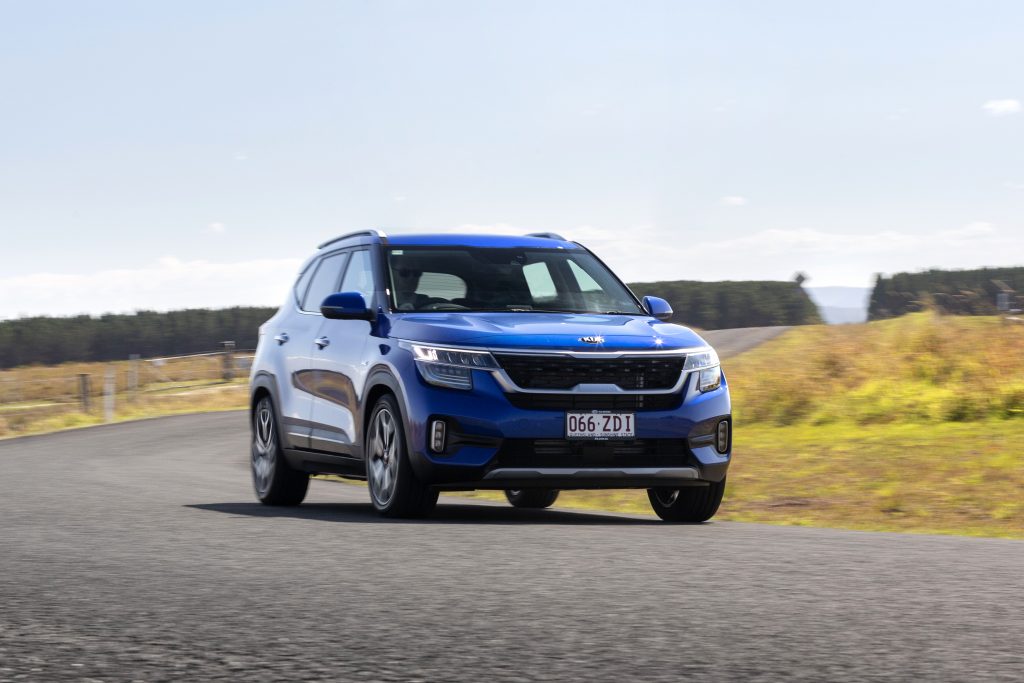
So if you’re looking for a small SUV, you’ll need to study the specifications very carefully.
And there is no doubt that plenty of people are looking for the practicality of a small SUV. As Damien Meredith, Kia Australia COO, explains, “It’s a strong segment, and that’s why we were so anxious for the Seltos to arrive.”
The Seltos slots into the Kia range below the Sportage (although it’s not much smaller) and it will have wide appeal, far beyond the “young, tech-savvy” buyers that are its stated target audience (and helps explain the choice of currently hotter-than-hot singer Billie Eilish providing the soundtrack to the advertising – as an over-50, it’s okay if you don’t know who she is). In fact, the Seltos has plenty to recommend it to over-50 buyers, “tech-savvy” or otherwise.
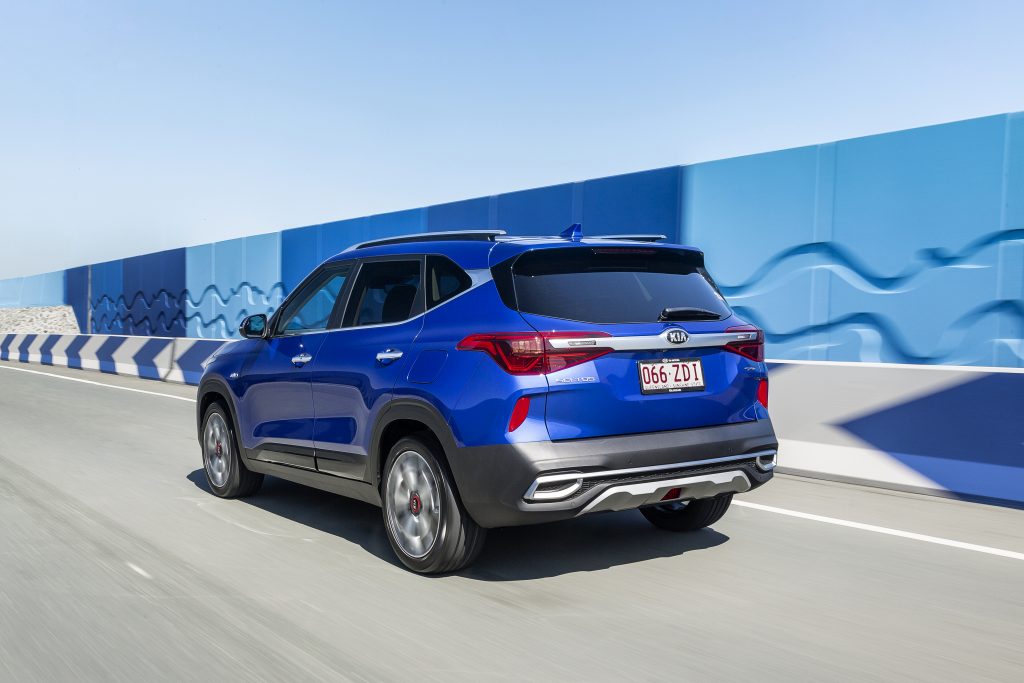
Happy styling
The Seltos styling shows how far Korean designers have come, and has sufficient elements to give it a distinct identity, but nothing outrageous that has the potential to alienate buyers.
It is, to our eyes, a happier and more cohesive design than the Hyundai Venue and about the only obvious trait the two share is the shallow side window design. Car design, like all fashion, moves in cycles, and it appears we may be transitioning from sensuous curves back to more sharply defined creases – but don’t quote us on that!
The C-pillar garnish (in brushed stainless-steel look or in matte black, depending on model) adds a touch of class, while the GT-Line’s LED lamp running above the grille is particularly stylish, as is the chrome highlight at the rear that extends into the tail lights.
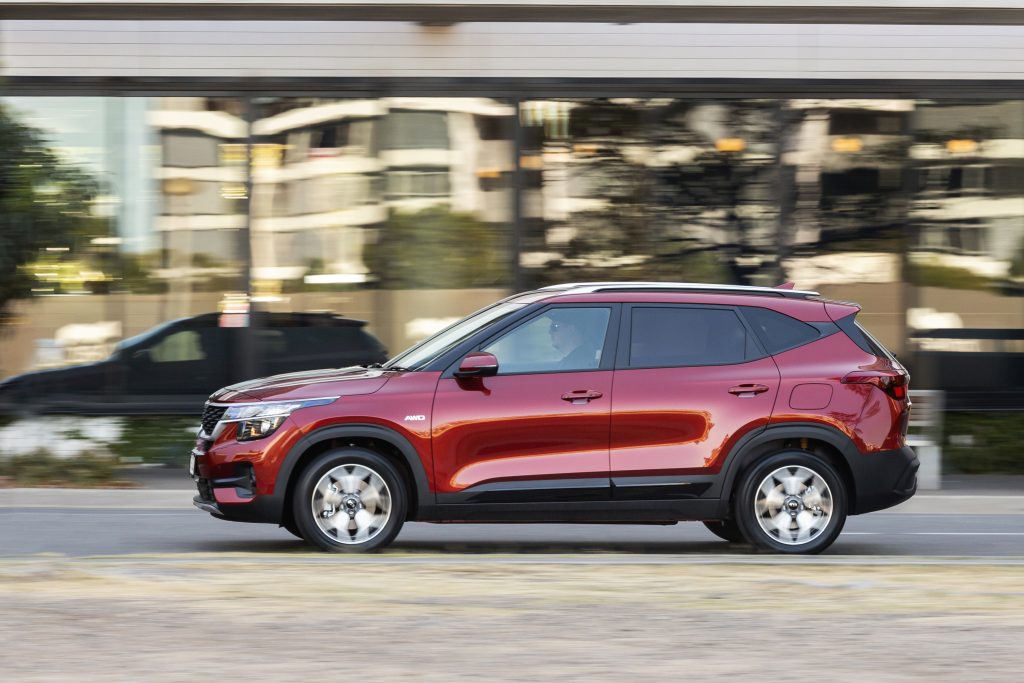
First, choose your model
The Seltos model range starts with the S, followed by the Sport, Sport+ and the range tops out with the GT-Line (from what we can gather, the hyphen is optional).
Before we look at the standard equipment, let’s define the pricing, and it’s all drive away. The S comes in from $25,990; the Sport from $29,490, the Sport+ from $32,990. All-wheel drive models are limited to two: the Sport+ at $36,490 and the GT-Line from $41,990.
There are two engines: the 2.0-litre Atkinson Cycle in the front-wheel drive models, while the all-wheel drive models get the turbocharged 1.6-litre Gamma engine.
Options are commendably limited, with a $1000 Safety Pack (which we strongly recommend) for the S and Sport models and premium paint for $520. The only “non-premium” colour is, unusually, Starbright Yellow, not the usual white. The GT-Line models are offered with two-tone paint (a black roof over White or Yellow) but this is not available if a sunroof is specified.
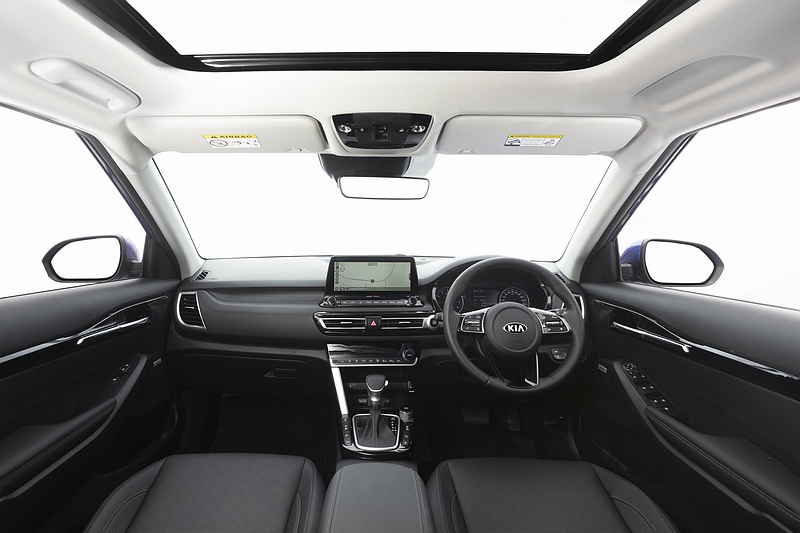
An interior you can live with
Stepping inside the Seltos reveals another area in which the Koreans have been fast learners. We started with the GT-Line and were immediately impressed with the quality of the fittings and how well put together everything felt. The Sport+ and Sport also won’t leave you feeling like you should have spent the extra money (although we didn’t get a chance to look closely at the base S model). From our perspective, we’d say the Sport+ is the sweet spot.
The extra dimensions mean there’s good interior space all ‘round, including in the boot where you get 433 litres with the rear seats upright (that’s in models with the full-size spare; the entry level S gets steel wheels and a space saver spare, upping its luggage capacity to 498 litres). Seats fold 60:40, increasing luggage space to a very generous 1393 litres.
Moving forward to the rear seats, once again those bonus millimetres pay off. Real humans can be accommodated back there, although the smallish side windows can make it feel a tad claustrophobic. And real humans would appreciate air vents – only the GT-Line gets them, ditto a rear central fold-down armrest, meaning there are no cupholders for rear seat passengers either.
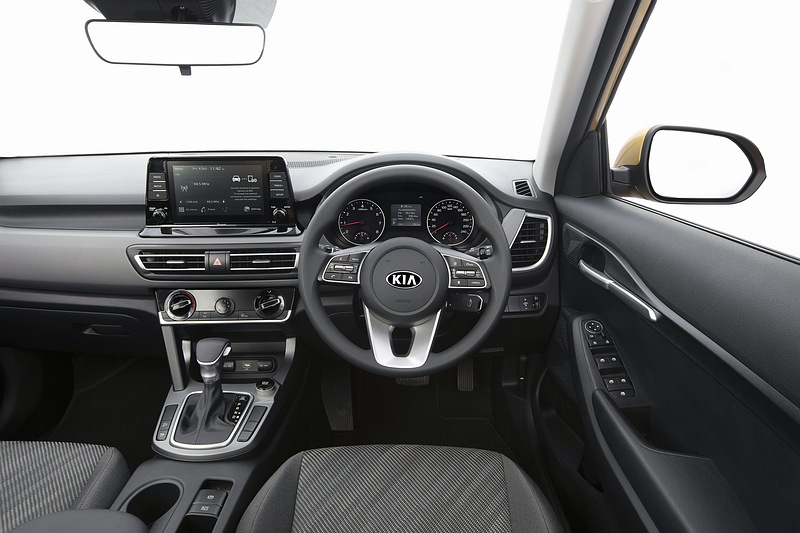
Front seat occupants also miss out on some niceties if you go for anything below the GT-Line but nothing you couldn’t live without. The padded dash on the GT-Line looks more upmarket than the lesser derivatives and it’s the only one that gets padded armrests. Otherwise, everything looks robust and able to take whatever treatment will be dished out. Naturally, rehydration is well cared for with cupholders between the seats and bottle holders in the doors and there are plenty of storage nooks for the things we all need to carry with us. However, one of our favourite grizzles is where to put the superfluous key (push button start means it usually sits in a cubby in the central console, where it rattles and slides around – car companies insist on telling us that you should keep it in your pocket or bag, but that’s not always comfortable, and has its own downsides).
In the current idiom, a large (10.25-inch) touchscreen sits proud on the dash (the base model makes do with an 8-inch screen). A worthwhile bonus is a split screen feature meaning what you see isn’t an either-or proposition. Apple CarPlay and Android Auto, Bluetooth, USB connectivity are all things we’ve come to expect, and the GT-Line also gets wireless phone charging (although it still doesn’t work with our older Samsung) and a 7-inch digital instrument cluster and 8-inch head-up display.
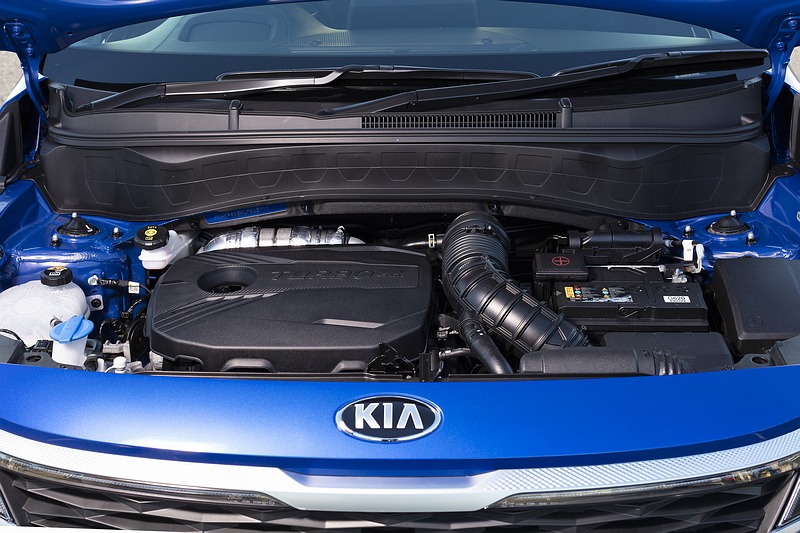
More is less
It may sound counterintuitive, but the 1.6-litre engine is the more competent unit, although there’s nothing wrong with the 2-litre either.
Both the turbocharged 1.6-litre and normally-aspirated 2.0-litre are fuelled by petrol (there’s a diesel variant, but that’s only being sold in India) and drive through automatic transmissions, although the auto in the 1.6 is a seven-speed dual-clutch auto while the 2.0-litre gets a CVT (continuously variable transmission). Both transmissions are fairly typical of their kind: the CVT slurs its way up and down through the rev range and asks you to be a little predictive with your use of the throttle (although it’s more like a normal auto than most), while the dual-clutch auto can occasionally be wrong-footed as it tries to anticipate whether you want to accelerate or slow.
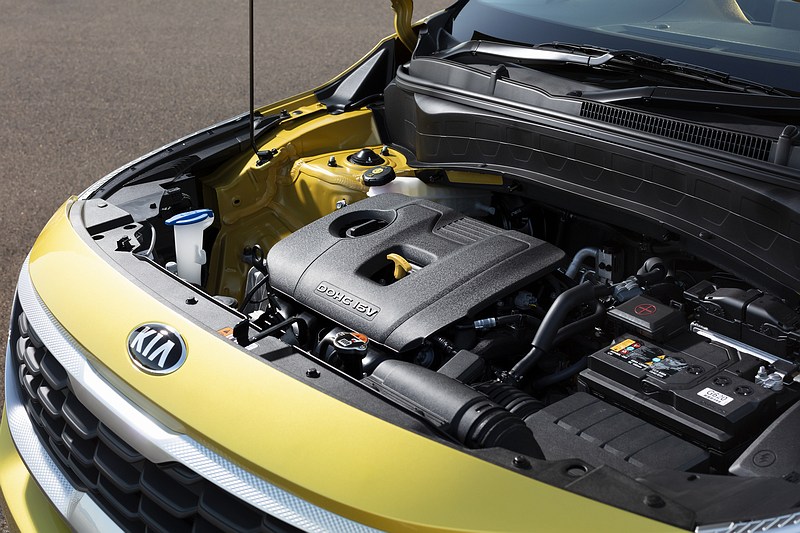
The 2.0-litre Atkinson cycle engine powering all front-wheel drive models puts out 110kW at 6200 and 180Nm at 4500rpm. It’s adequate rather than thrilling and according to Kia, will be the choice of 80 percent of buyers.
For the all-wheel drive variants, the engine is a 1.6-litre turbocharged four-cylinder with 130kW at 6000rpm and 265Nm of torque between 1500 and 4500rpm. The additional power and significantly increased torque over the 2.0-litre make this a far more satisfying drive, but the price premium means you’ll need to decide if it’s really worth it for everyday motoring.
The 1.6-litre also increases the quoted towing capacity, although not by much. Front-wheel drive models are quoted at 1100kg (braked) while the 1.6-litre AWD models can tow up to 1250kg (braked). FWD or AWD are both quoted at 600kg unbraked.
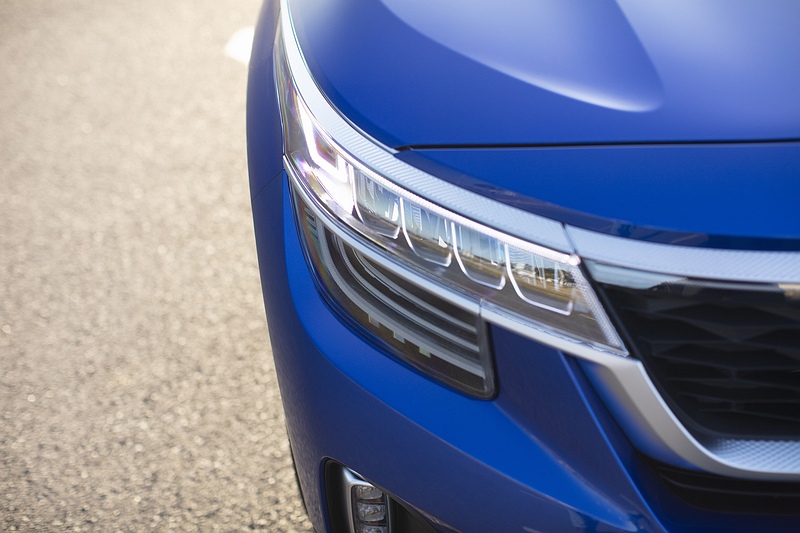
Tuned suspension
The Seltos, we’re told, was developed with an eye on the North American market, and that can often mean compromises for our very different conditions.
Kia Australia pushed the boat out on this one and specified a multi-link rear suspension uniquely in the model for Australia (the 2.0-litre models stay with a torsion beam rear axle) and other suspension components exclusively for the Australian market.
The result is that the FWD models feel a little softer on the road, no doubt also attributable to their smaller wheels (16-inch on the S with 205/60 tyres, 17-inch alloys on the Sport and Sport+ with 215/55 tyres) and perhaps a little less self-assured. The GT-Line rides on larger wheels and lower profile tyres (18-inch and 235/45) and that translates to slightly more road noise, although we found it commendably quiet – NVH (noise, vibration, harshness) were a major focus for Australia, even down to thicker windscreen glass.
The power-assisted steering is generally good, but can on occasion feel a little too sensitive. We suspect it’s one of those things that owners will quickly adapt to and never notice again.
One thing we did notice was the marked difference in the headlight brightness – only the GT-Line gets LED headlights (and tail lights) – and we could always tell whether it was the top-spec car following us, or one of the other models. We’ll be interested to see if the headlight intensity carries over to night-time use when we conduct a more in-depth test.
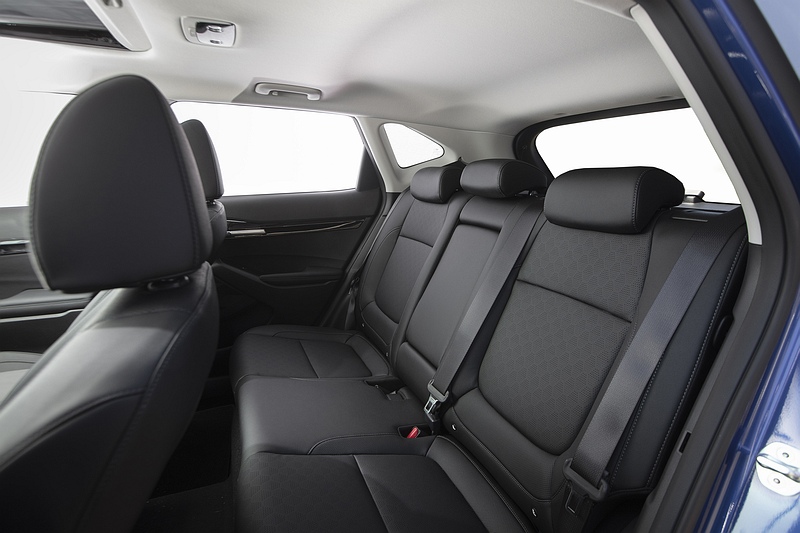
Safety is not an option
Okay, we’re going to complain that some safety equipment is only available on the lower-spec models as part of a $1000 optional pack, but at least it is available.
The Seltos hasn’t at this stage been tested by ANCAP (it will undergo testing and rating before Christmas). The lack of high-speed autonomous emergency braking with car, pedestrian and cyclist detection (available in the Safety Pack, along with adaptive cruise control, driver attention alert, electronic parking brake, electric folding mirrors, a driver’s window that raises and lowers automatically and 15-inch rear disc brakes) means the Seltos will probably end up with a split rating: four stars for the S and Sport models and a five-star rating for the Sport+ and GT-Line models. Such are the demands of keeping the headline price low.
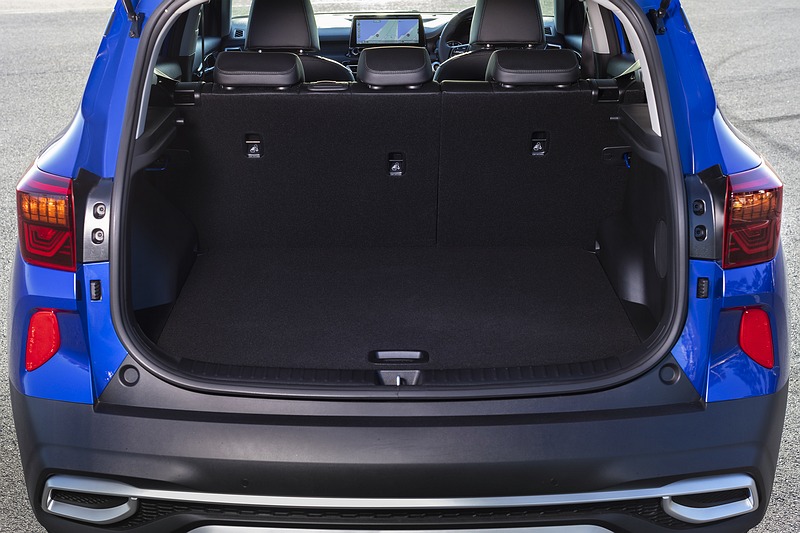
The Sport+ model gets blind-spot monitoring and rear cross-traffic alert with braking intervention.
The GT-Line includes a nifty safe exit alert, warning if a door is about to be opened onto a hazard – cyclists rejoice! – and lane following assist that more actively centres the car in its lane than the standard system.
All models have ISOfix anchors on the outer two rear seats and three top tether points.
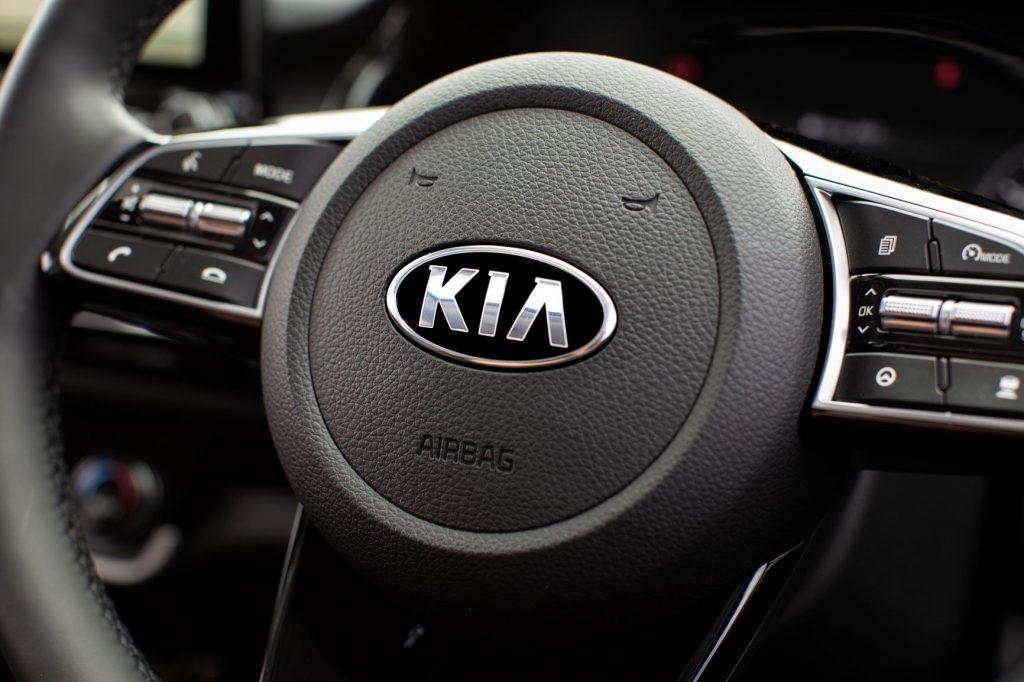
Airbag innovation
Airbag safety is very much in the headlines these days with the Takata mess. When the features were being explained to seniordriveraus, our attention was piqued by the airbags being described as “depowered”.
Airbags, as we all know, can deploy with considerable force. This can result in some problems, although the nett result is fewer serious injuries. If the driver is holding the steering wheel incorrectly (as so many do), an arm can be propelled into the face. Passengers who stupidly rest their feet on the dashboard can suffer serious leg and ankle injuries if the airbag deploys. Airbags can cause eye and facial injuries to people wearing spectacles or sunglasses. And a real issue with some older drivers is that they sit too close to the steering wheel, making airbags even more dangerous. While any of these problems is preferable to smashing into the dashboard, the steering wheel or through the windscreen, they are still an issue.
Airbags in the Seltos inflate less aggressively, but still sufficiently to ensure occupant protection. According to Kia Australia product planning manger Roland Rivero, airbag deployment times are unchanged. He tells us the techniques for depowering include removing some of the gas-generating propellant or stored gas from the inflators and adding additional vents.
We haven’t heard of any other manufacturers taking similar steps to improve airbag safety, but we’ll look into it. In any case, well done Kia.
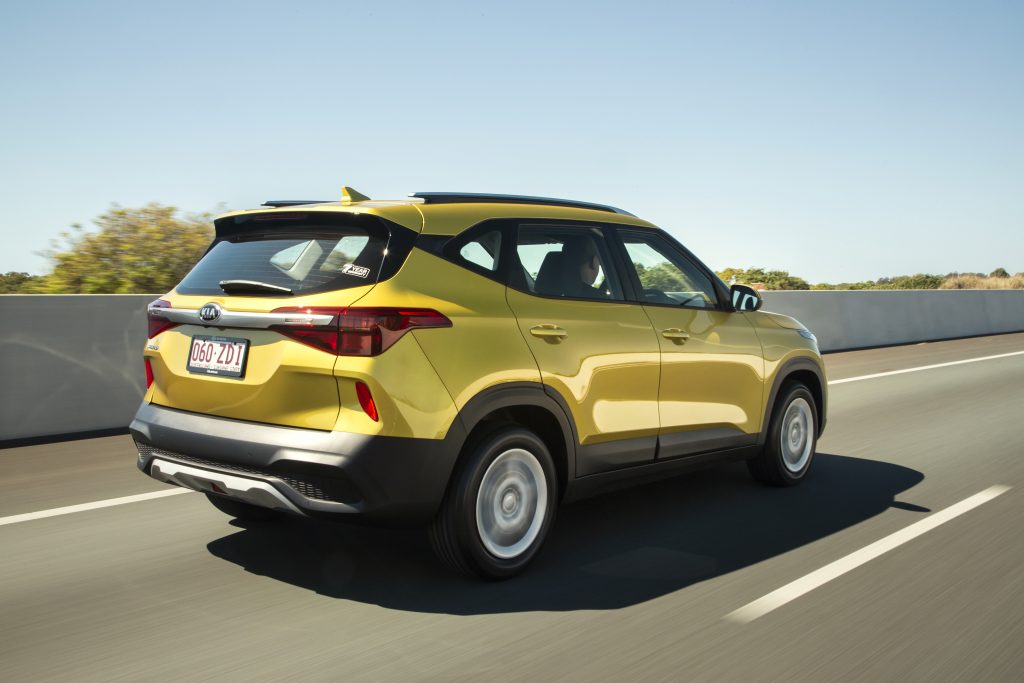
Still an industry-leading warranty
Kia has done all Australian motorists a huge favour with its seven-year/unlimited kilometre warranty because other companies have been forced to improve their offerings (although premium brands are proving surprisingly recalcitrant). Adding to Kia’s warranty is a seven-year capped price service plan, seven years roadside assist and 10 years of map updates for the sat nav.
One consideration in the turbo/non-turbo decision is that while both have recommended 12-month service intervals, the turbo is 10,000km while the non-turbo can go 15,000km.
Servicing costs haven’t been stated at this stage, but are expected to be similar to those for the Sportage.
Summary
The new Seltos will be a strong seller for Kia, even at a price that will raise eyebrows for many who still recall Kia as a “cheap and cheerful” brand, at least until they look into the value-for-money equation.
Supply will probably be the constraining factor – initially, Kia Australia can only source 650 cars a year – and we’re sure they could sell more.
